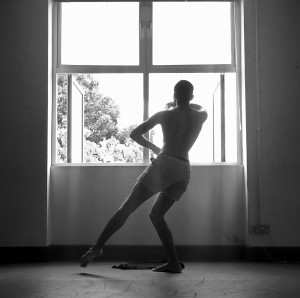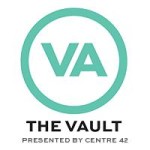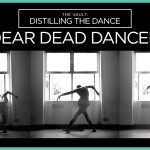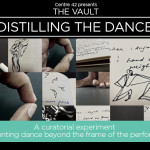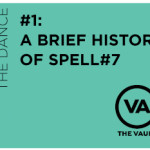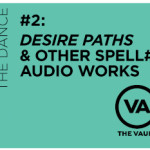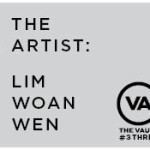Born in Bangalore and based in Singapore, Kiran Kumar is an artist, researcher and writer who specialises in dance-centric projects. He first graduated with a degree in mechanical engineering in 2006 and began his career as an information technology analyst, but he was lured into the world of dance and movement through his practices of Odissi, a traditional Indian dance form, and Hatha Yoga.
Now armed with postgraduate degrees in Solo Dance Authorship from the University of Arts Berlin and in New Media Art from the City University of Hong Kong, Kumar takes a process-oriented, research-based approach to examine how dance can be presented. His past works took the form of performances and installations encompassing multimedia, text and archiving, which have been staged in countries such as Germany, Poland, Hong Kong and Singapore.
Kumar joined Dance Nucleus for a six-month artist residency at the start of this year, where his research has been centred on Odissi, Hatha Yoga, and traditional Javanese dance. His four-part presentation comprises an essay-performance, an audio installation, an exhibition, and a workshop, which will take place at Centre 42 and Dance Nucleus over the first weekend of July.
Dance & Text
Kumar has explored writing and text as extensions of his physical dance practice. Drawing from grounded theory and anthropological research techniques, he uses text to document movement and thoughts, to explore the development of a dance work both from the artist’s perspective and within its wider sociocultural context.
Ethnographic researchers in dance have used various forms of dance notation to, for example, record ceremonial dances that are on the verge of ‘extinction’ because the people who perform it are becoming integrated into another culture. Nevertheless the focus here is not on conventional dance notation (like Laban or Benesh). Instead the focus is on the notion of notation with relation to the process of development rather than the movement itself.
Source: Congruencies in Ethnography and Choreography by Kiran Kumar, http://expandingnotes.tumblr.com/post/23283134943
When the artist is also the ethnographer of one’s own practice, autoethnographic journaling, or “expanded writing”, becomes a way to capture the intent and processes embedded in the development of a work. These texts not only become the material remnants of transient artistic practices, they can also become sources of new work in themselves.
Interview with Kiran Kumar
When and how did you first encounter dance?
By watching Bollywood on TV when I was a kid growing up in India. I’d dance along, and at one point my parents had to reposition the living room so that they didn’t have to watch me dance all the time!
You studied mechanical engineering at the National University of Singapore – how did you go from that to becoming a dancer?
I was very fascinated with science, especially biology and chemistry as I come from a family of doctors. In college I decided to take up physics and maths, and from there I got into engineering. But then I found out that engineering is not physics or mathematics – it’s something very different. So I started falling out of love with it, and I randomly started dancing at the NUS Centre for the Arts. I was interested in choreography, and the Centre for the Arts supported me quite a bit in my first few works. But then it came to this point after three years of juggling dance and my day job [as an information technology analyst], where I felt that I couldn’t do this balancing act anymore. I either take the plunge now or it’s not going to happen, so I left Singapore three weeks after making the decision, and moved to Hong Kong in 2010.
Let’s talk about your upcoming showcase, Distilling the Dance. It’s about presenting dance beyond the frame of performance – why is that something you’d like to explore?
Because performing has never interested me as much as dancing. The act of dancing excites me, but performing the dance – the idea and awareness of being seen – is a whole other thing.
Tell us about the creative process behind the essay-performance component, Dear Dead Dancer, and how it will be presented.
It started with a residency that I took up with Dance Nucleus in January, and when I spoke with Centre 42 about The Vault, I had a desire to overlap them. I approached it with a method that’s similar to autoethnography, where I treat the artist as an ethnographer (someone who studies people and culture) who’s making a field trip into the artistic process, and then making notes along the way. I worked with three forms: yoga, Odissi (a traditional Indian dance form), and Javanese dance, which took me to Indonesia a lot. I made notes and wrote reflections, which are stitched together like chapters of an essay. [I’ll be reading them out], interspersed with dance performances that are sometimes annotative, sometimes just to break from my voice.
The second part of Distilling the Dance is an audio installation called There is no dance, which you first performed in 2013. What’s the idea behind it, and will you be doing anything differently this time?
I started building installations without performers as part of my MA thesis in Dance at the University of Arts in Berlin in 2013. The idea was that the visitor who comes to the installation is the dancer, so that the body occupies the space, and the space becomes interrupted. The university gave us a production budget for each of our projects, but then suddenly here’s somebody who’s not doing any performance. That’s when I realised that this kind of work could be considered visual art rather than dance, which is not something I wanted to do. So, for the first iteration of There is no dance, I took the idea of an installation back into the theatre, where dance traditionally happens, almost as a kneejerk reaction. This time around, my ideas have crystallised more, and I’ve even introduced a little bit of music into it.
And what’s the thinking behind Expanded Writing, the third part of your showcase as part of Centre 42’s Vault programme?
I’ve divided the bookshelf [in the Library] into a few sections – one of them is on autoethnography, which includes a lot of my diaries and drawing books through this research period, along with journal articles and papers on autoethnography. This reading table is to be shared, and I will ask that people don’t return the books to the shelves after they read them. The categories and bibliography will be available on the shelves if they want to know what went into each category, but I’d like the books to be left in the space so that when the next person comes in, they can start engaging in associative thinking about who placed one book next to another.
And finally, Distilling the Dance is inspired by spell#7’s audio-tour performance, Desire Paths. What is it about that experience that piqued your interest?
That was really the first performance I saw that had no performance and no performer. I felt very conscious of the way I was behaving after a while – like there was one point where they asked you to take a break and get a tea at one of the hawker centres, and this was the first time I was drinking tea and thinking am I doing it because I’ve been instructed to, or do I partly want to drink the tea, or am I performing? So slowly I started working with this idea of having no performer, but instead have the visitor – the person who has a desire to encounter dance – to do the dance themselves at some level.
Interview date: 28 June 2016 / Interviewer: Gwen Pew
By Daniel Teo & Gwen Pew
Published on 24 Jun 2016
The Vault: Distilling the Dance is the first of three presentations focusing on local dance-makers’ responses to Singapore play-text. This is a part-research-part-presentation endeavour to investigate movement in space and the body through inspired by play-texts. In Distilling the Dance, dance artist Kiran Kumar works with spell #7’s audio archives. More information here.

